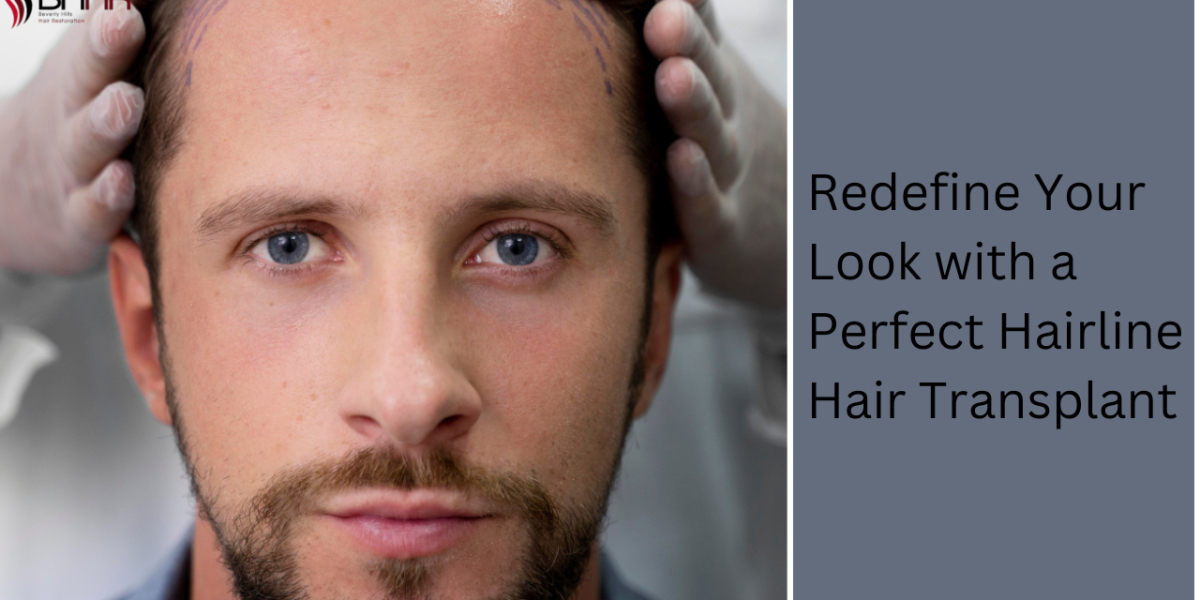A well-defined hairline plays a vital role in framing the face, enhancing symmetry, and contributing to an overall youthful appearance, as hair loss becomes a concern for many individuals, whether due to genetics, ageing, stress, or medical conditions. Restoring the hairline is often the first step in regaining confidence. A hairline hair transplant offers a long-lasting, natural-looking solution that helps individuals reclaim their identity and redefine their appearance with precision.
Understanding the Hairline Hair Transplant
A hairline hair transplant is a specialised procedure focused on restoring the front portion of the scalp, typically where thinning or recession occurs first. Unlike full-scale transplants for more extensive baldness patterns, this treatment focuses on rebuilding or refining the frontal hairline. Using techniques like Follicular Unit Extraction (FUE) or Follicular Unit Transplantation (FUT), surgeons meticulously place individual hair grafts to match the direction, density, and angle of natural growth. This precision-focused procedure requires artistic skill and surgical expertise, as the goal is to replicate the natural curvature and structure of a healthy hairline without it appearing artificial or overly uniform.
Who Is an Ideal Candidate?
Not everyone experiencing hair thinning is immediately eligible for this treatment. Ideal candidates include individuals with a receding hairline but stable donor hair at the back or sides of the scalp. Age also plays a role; those in their late 20s or older are often better suited, as their hair loss patterns are more predictable. Both men and women can benefit, particularly those who notice early signs of hairline erosion or asymmetry. A professional consultation helps determine candidacy by evaluating factors like hair texture, density, skin type, and overall scalp health.
Step-by-Step Overview of the Procedure
The process begins with a detailed consultation, where the surgeon designs a hairline that complements the patient’s facial features, age, and hair type. This customised approach ensures that the final result aligns with individual aesthetics. Once the hairline design is confirmed, the donor area is prepared. In FUE, individual follicles are removed using a micro-punch device, leaving minimal scarring. In FUT, a thin stripe of scalp is removed and dissected into grafts. The grafts are then carefully implanted along the newly marked hairline, ensuring the right angle, direction, and spacing to mimic natural growth patterns. The entire process is performed under local anaesthesia and usually takes 4–8 hours, depending on the number of grafts.
The Importance of a Natural-Looking Hairline
Achieving a natural appearance is the hallmark of a successful transplant. A skilled surgeon will avoid straight lines or symmetrical placement, which can look artificial. Instead, a slightly irregular pattern is used to imitate the way real hair grows. Attention to the transition zone—the soft, feathered area between the forehead and denser scalp hair—is critical to creating a seamless blend. Factors like facial symmetry, forehead height, and temporal recession are all considered to ensure the end result enhances the overall facial structure rather than drawing unwanted attention.
What to Expect During Recovery
Recovery from a hairline procedure is generally smooth. Mild redness, swelling, or scabbing at the transplant site is common in the first few days. Most patients resume non-strenuous activities within 48–72 hours. The transplanted hairs usually fall out within 2–4 weeks—a normal phase called “shock loss”—before new growth begins around the third month. Visible results become more apparent by the sixth month, with full density often realised after 9–12 months. Following aftercare instructions such as gentle washing, avoiding sun exposure, and refraining from scratching the scalp, is vital to ensure optimal healing.
Advantages That Go Beyond Aesthetics
While the physical transformation is significant, the emotional benefits are equally important. Patients often report improved self-esteem, enhanced social confidence, and a more youthful self-image. A restored hairline can dramatically alter how others perceive you, but more importantly, it can change how you perceive yourself. Unlike temporary solutions like hair fibres or topical products, this treatment delivers lasting results that require no ongoing maintenance or concealment techniques.
Potential Risks and How to Minimise Them
As with any surgical procedure, hairline restoration carries minor risks. These may include infection, scarring, or uneven hair growth if performed by an inexperienced practitioner. However, choosing a qualified surgeon with a proven track record drastically reduces these risks. It’s also essential to have realistic expectations. While density can be improved, the outcome depends on the number and quality of donor grafts. A thorough preoperative evaluation helps set achievable goals and prepares patients for the transformation journey.
Cost Considerations
The cost of the procedure varies based on factors such as the number of grafts needed, the technique used, and the geographic location of the clinic. While this may seem like a significant investment upfront, the long-term benefits—both aesthetic and psychological—make it a worthwhile decision for many. It’s crucial to focus on value rather than price, as the surgeon’s skill will determine the quality of the outcome.
Conclusion
Redefining your appearance begins with something as subtle yet powerful as a well-crafted hairline. A hairline hair transplant is more than a cosmetic enhancement—it’s a restoration of confidence and identity. With the right approach, advanced technology, and expert hands, this procedure can offer transformative results that look and feel entirely natural. If you’re considering a way to enhance your appearance and restore your confidence, exploring the option of a professionally done hairline restoration could be the life-changing step you’ve been searching for.







